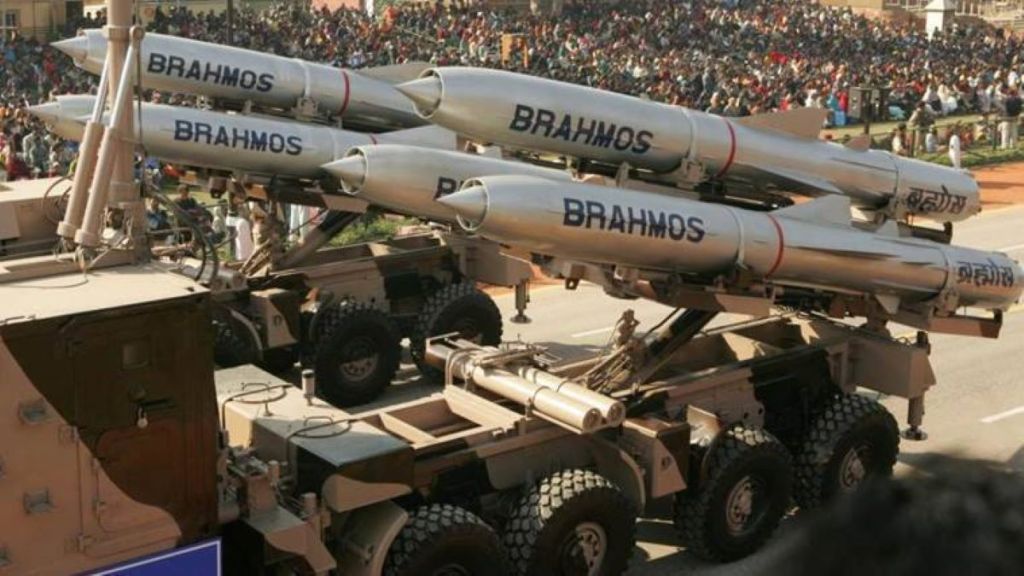As China’s influence continues to expand across the Indo-Pacific, nations in Southeast Asia are stepping up efforts to bolster their defence capabilities. In a significant development, Indonesia is nearing the conclusion of a $450 million deal with India for the purchase of BrahMos supersonic cruise missiles, a transaction that reflects the shifting dynamics of regional security.
Indonesia’s decision to acquire the BrahMos—a joint venture product of India’s DRDO and Russia’s NPO Mashinostroyeniya—comes against the backdrop of Beijing’s assertive actions in the South China Sea. With overlapping territorial claims in the Natuna Sea and heightened tensions with its neighbours, Jakarta’s focus on modernising its military has gained urgency. The deal, once finalised, will mark a new phase in Indonesia’s defence posture while reinforcing India’s role as a strategic partner in Southeast Asia.
ASEAN’s Growing Defence Challenges
For years, ASEAN nations have faced the challenge of balancing economic ties with China against the need to safeguard their sovereignty. Beijing’s actions, including its militarisation of artificial islands and aggressive maritime policies, have prompted a recalibration of defence strategies across the region. Indonesia, despite its non-claimant status in the South China Sea, has found itself drawn into the fray due to its resource-rich Natuna waters.
The BrahMos missile system, capable of striking targets at a range of 290 kilometres with speeds exceeding Mach 2.8, is a game-changer for Indonesia. It will significantly enhance the country’s ability to deter potential aggression, marking a critical step in Jakarta’s broader defence modernisation plans.
India’s Opportunity to Deepen Regional Ties
For India, the deal is both a strategic and economic opportunity. With Southeast Asia emerging as a focal point of geopolitical competition, New Delhi has sought to expand its influence in the region. Despite ASEAN’s perception of India as a relatively minor player compared to China or the US, initiatives such as the India-Indonesia bilateral naval exercise Samudra Shakti and defence industry exhibitions in Jakarta signal a shift in strategy.
This transaction also aligns with India’s ambitions to become a major arms exporter. Following the successful delivery of BrahMos missiles to the Philippines in 2022, Indonesia represents the second major customer for India’s defence technology. The potential settlement of the deal in local currencies—Indian Rupee and Indonesian Rupiah—further underscores New Delhi’s intent to foster deeper economic and strategic ties with the region.
China’s Influence and the Natuna Sea Dispute
China’s activities in the Natuna Sea have heightened Indonesia’s concerns about its maritime security. Beijing’s nine-dash line, which extends into Indonesia’s exclusive economic zone (EEZ), has led to frequent confrontations between Chinese vessels and the Indonesian navy. The BrahMos missiles, deployed strategically, could provide Indonesia with a robust deterrence mechanism.
Indonesia’s President Prabowo Subianto’s reported visit to Pakistan during his trip to India for Republic Day has added a layer of complexity to the deal. While Jakarta has assured New Delhi of its commitment to the agreement, Indian policymakers remain wary of the optics surrounding such high-profile visits.
The Broader Regional Implications
If finalised, the BrahMos deal could serve as a template for India’s engagement with other ASEAN nations. Vietnam, for instance, has expressed interest in acquiring the missile system as it seeks to counter Chinese influence in the region. By leveraging its defence exports, India is not only advancing its domestic manufacturing capabilities but also positioning itself as a reliable security partner in the Indo-Pacific.
Indonesia’s recent inclusion in the BRICS bloc adds another dimension to the deal. The use of local currencies in settling the transaction reflects a growing trend among BRICS nations to reduce dependency on the US Dollar. This move could pave the way for similar arrangements in future defence deals, further integrating India’s economy with those of its strategic partners.
As China continues to reshape the security landscape in Southeast Asia, nations like Indonesia are taking proactive steps to safeguard their interests. For India, the BrahMos deal represents a significant diplomatic victory, showcasing its ability to deliver high-quality defence technology while strengthening its regional partnerships.
This agreement is more than just a commercial transaction—it is a strategic signal to the Indo-Pacific and beyond. With an announcement expected during Republic Day celebrations, the deal could mark a defining moment in India’s ascent as a global defence exporter and a key player in the evolving security architecture of Southeast Asia.


